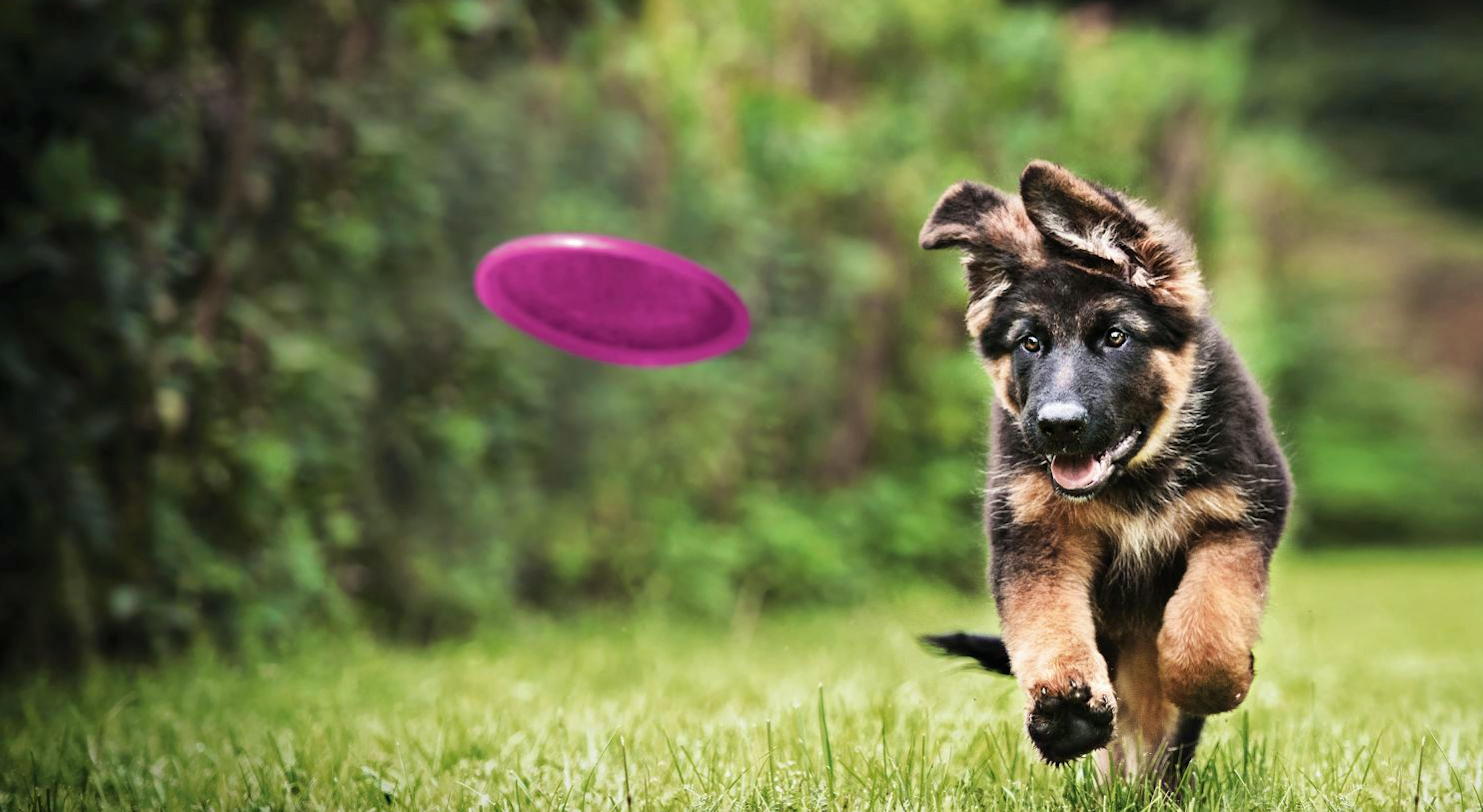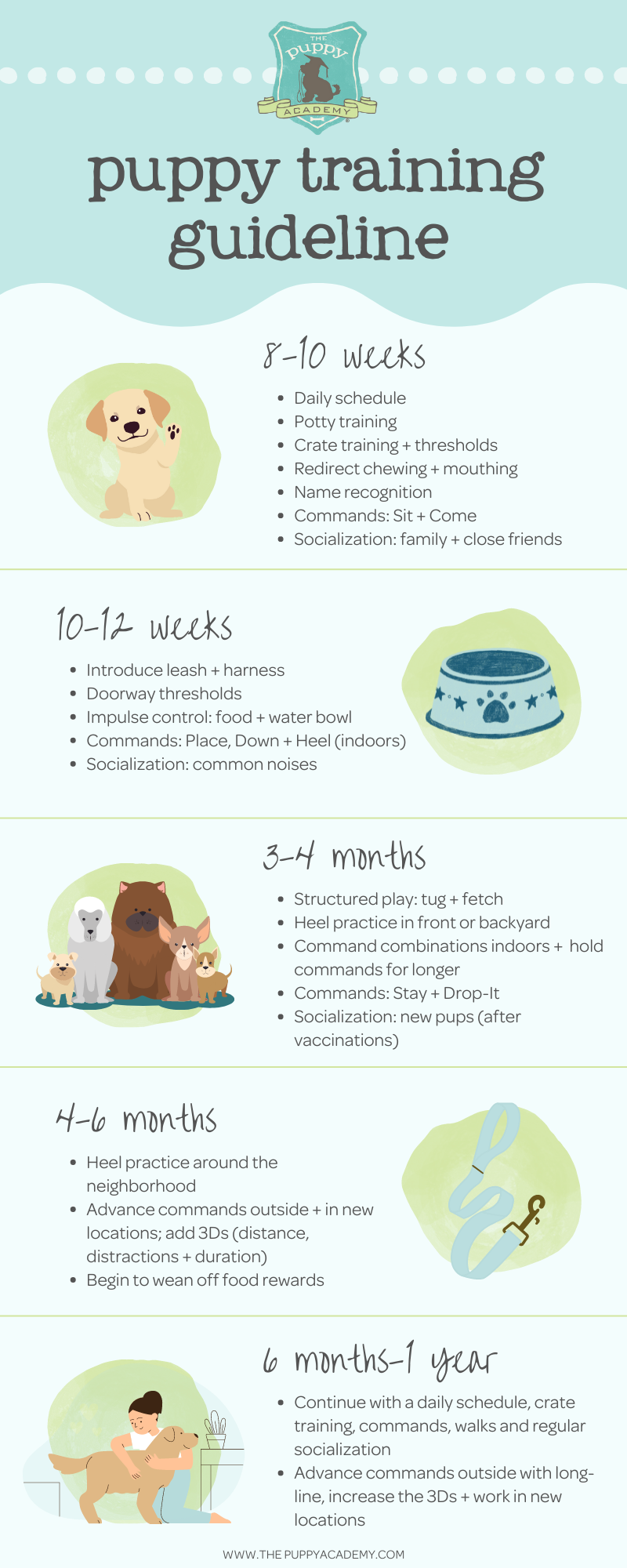Puppy Training Techniques: Teaching Basic Commands for a Happy Pet
Wiki Article
Top Young Puppy Training Techniques to Guarantee a Well-Behaved Pet
Effective pup training is critical for growing a well-behaved companion, and different techniques can dramatically influence a dog's advancement. As we discover these techniques better, it ends up being clear that the success of puppy training hinges on a mix of methods that can change your pet's habits in remarkable methods.Favorable Reinforcement Techniques
Making use of positive support techniques is necessary for effective young puppy training, as it motivates wanted behaviors via rewards instead of penalty. This method takes advantage of the all-natural knowing procedures of dogs, reinforcing etiquette by supplying instant and concrete incentives, such as deals with, appreciation, or playtime. By connecting favorable end results with particular activities, young puppies are more probable to duplicate those behaviors in the future.Effective favorable reinforcement entails timing and consistency. Benefits need to be given instantly after the desired actions strikes create a clear connection in the puppy's mind. Additionally, varying the types of incentives can maintain a pup's passion and inspiration throughout the training procedure. Some young puppies may respond far better to spoken praise while others may prefer a favored plaything or treat.

Consistency in Training Commands
Maintaining uniformity in training commands is vital for strengthening the lessons learned through positive reinforcement methods. Canines prosper on regular and predictability, so using the exact same verbal commands and hand signals for certain actions is important. This uniformity helps pups comprehend what is expected of them, decreasing confusion and stress for both the pet and the trainer.
Timing also plays a considerable duty in consistency. Commands need to be provided immediately during training sessions and followed immediately by positive reinforcement, such as deals with or praise. This instant response aids strengthen the association between the command and the wanted habits.
Integrating consistency right into training sessions will certainly create a stable discovering setting, advertising quicker mastery of commands. Inevitably, a well-structured approach cultivates a strong bond in between the pup and its owner, leading to a much more obedient and mannerly pet.
Socializing With Other Family Pets
Socialization with various other pet dogs is critical for a young puppy's development, as it aids them learn proper behaviors and communication abilities in diverse social contexts. Early interactions with different pets can considerably affect a puppy's character and flexibility in various circumstances. When puppies are revealed to a selection of animals, they end up being extra confident and much less frightened, which can stop potential behavioral problems later on in life.
Show your puppy to identify signals from other pet click for source dogs, such as indications of playfulness or pain, promoting mutual respect and understanding. Routine socializing not only boosts your young puppy's social abilities however additionally adds to their general health, producing an extra harmonious living setting.
Crate Training Conveniences
Recognizing the countless advantages of pet crate training can considerably enhance both the young puppy's and proprietor's experience. Crate training provides a protected and secure environment for young puppies, click here to find out more guaranteeing they feel secured when laid off. This complacency can significantly minimize anxiousness and stress levels for both the owner and the family pet.In addition, crates act as a useful house-training tool. Puppies naturally prevent dirtying their resting location, thereby motivating them to hold their bladder until they are let outside. This impulse can accelerate the house-training procedure, fostering good practices beforehand.
Crate training also aids in managing a puppy's habits when without supervision. By providing a designated space, owners can prevent damaging habits, such as chewing on furniture or getting into hazardous compounds. Additionally, cages can be helpful throughout travel, providing a familiar space that can help calm a pup in brand-new settings.
Lastly, developing a pet crate routine urges freedom, allowing pups to find out just how to be alone without concern. Generally, cage training is an effective approach for promoting safety, technique, and serenity, leading to a well-adjusted, mannerly animal.
Chain Training Essentials
Leash training is a basic aspect of liable animal possession that guarantees a enjoyable and secure walking experience for both the pup and its proprietor. Proper chain training starts early, ideally throughout the puppy's socialization period. When out in public., this training helps develop good behaviors and promotes positive habits.To start, pick a comfortable collar or harness that fits your young puppy well. Affix a durable chain, guaranteeing it is not too long, as this can result in drawing and erratic behavior. Begin in a silent environment to decrease distractions and gradually introduce your puppy to new surroundings.
Use positive reinforcement methods, such as treats and appreciation, to encourage your young puppy to stroll next to you. If your young puppy draws, stop strolling and wait for them to return to your side before continuing.
Additionally, include brief training sessions with enjoyable disturbances to develop your young puppy's focus. With commitment and determination, leash training will certainly lead to an accommodating friend, making walks pleasurable for both the puppy and the owner.
Conclusion
In final thought, employing efficient puppy training methods is crucial for establishing a well-behaved pet dog. In general, these approaches collectively promote an unified partnership between young puppies and their proprietors.As we check out these methods even more, it comes to be clear that the success important source of pup training hinges on a combination of approaches that can transform your animal's habits in exceptional ways.
Using favorable support techniques is necessary for reliable puppy training, as it encourages wanted behaviors through benefits instead than penalty.Crate training additionally aids in managing a puppy's habits when unsupervised.Leash training is a basic facet of responsible pet ownership that guarantees a enjoyable and safe strolling experience for both the puppy and its proprietor.In conclusion, employing reliable young puppy training techniques is essential for establishing a well-behaved pet dog.
Report this wiki page